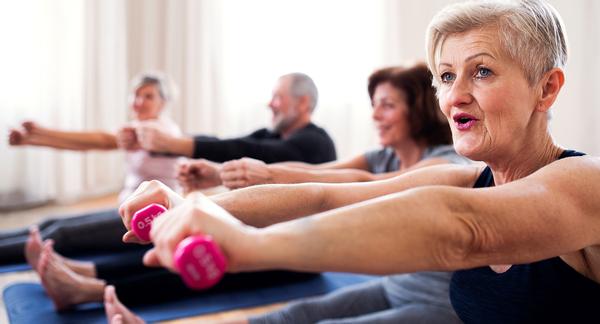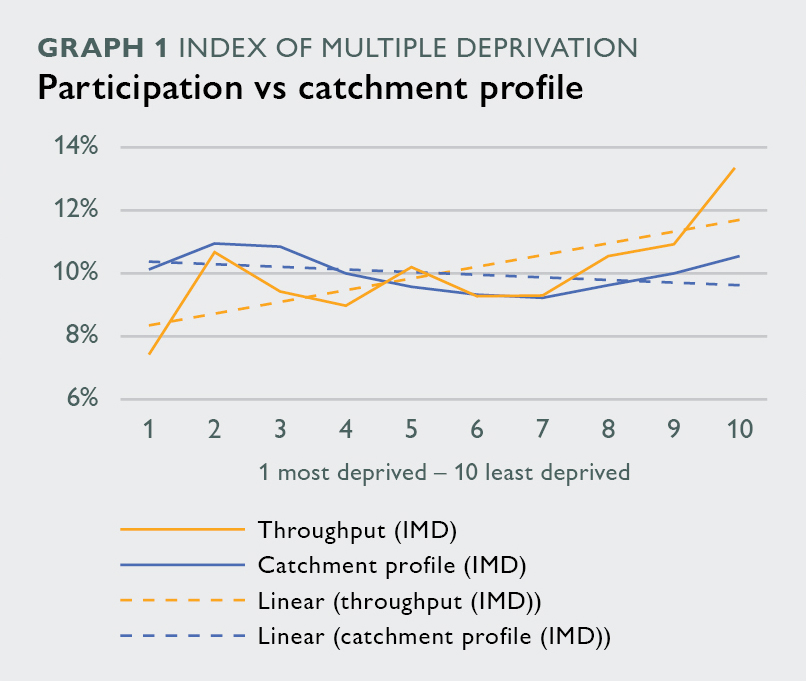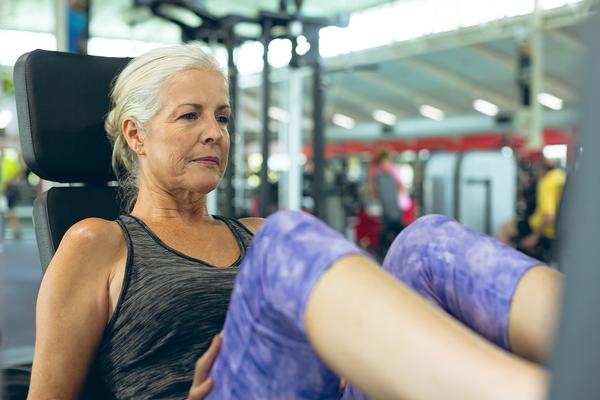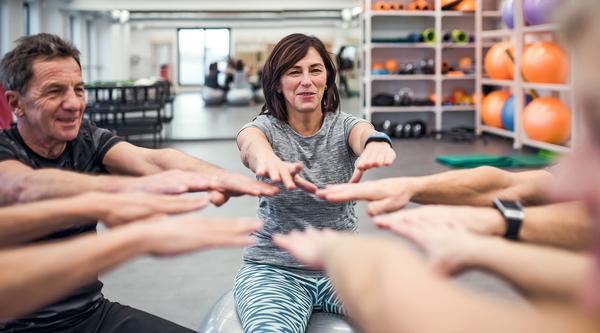features
Opinion: Aiming for equality
Moving Communities is our chance to demonstrate our value and develop a universal service for all, argues Martyn Allison

Sport England and its partners should be applauded for the investment in Moving Communities, because it not only gets us further forward in the development of data-based evidence, it also brings together a range of data about how well we’re recovering from the effects of the pandemic while giving insights into how we can contribute to the huge challenges facing councils and the health sector.
Money from The National Leisure Recovery Fund, recently distributed by Sport England, provided £100m to help address some, but nowhere near all, the financial problems being experienced by public leisure facilities, however, it leaves a problem which is likely to continue, despite reopening.
Any operator or provider in a contractual relationship with councils will face a difficult year and the period between the May 2021 elections and the setting of the 2022/23 budgets will be critical in shaping the future of public leisure.
There are three reasons we must now seriously engage with Moving Communities to maximise the quality and coverage of data it will provide:
1) Recovery
It will enable us to track our own recovery and see how well this is happening, who’s returning to facilities, their views on the experience and how efficient and effective we are.
By sharing and comparing data and evidence, we can identify and build on good practice and share innovation. Above all, we can learn from and support each other.
2) Evidence
It will provide us with an evidence-based narrative to share with councils as they investigate future policy and financing of leisure services over the short-, medium- and longer-term.
It will help us define who’s benefiting from our services, who’s not using them and their social value.
It will enable us to get a better balance between efficiency and effectiveness so we can contribute to the wider health-based partnerships that will develop within the Integrated Care Systems and Primary Care Networks. Health investment is evidence-led and without evidence, relationship building will be much harder.
3) Further support
It will enable Sport England to demonstrate to central government the impact of the £100m recovery fund and make the case for further support.
This could be additional financial support direct to councils through a further allocation to the recovery fund, specific recognition through local government financial settlements, or funds allocated through health policy and funding.
Failure to provide evidence that the initial funding has been successful would not be helpful for those making our case.
As a previous chair of the Quest/NBS board I’ve always encouraged the sector to make more use of data and evidence – both to help improve its performance and to evidence its value and impact. However, I’ve often found reluctance to fully engage with measurement, whether it be the National Performance Indicators, Active Lives, or the NBS itself.
As a sector, we seem very comfortable when the data confirms how good we are but less comfortable when it exposes our weaknesses and where we could improve. This cultural reluctance has held us back in the past and will do so again if we don’t wake up fast to the importance of data to the current challenges and opportunities ahead of us.
My optimism is tempered by fears that the story we might tell using Moving Communities could be partial and flawed by the data itself and how it’s collected. These very personal reflections emanate from research I’ve done recently when developing my thinking on Proportionate Universalism, as presented in a paper published by the Sport Think Tank (www.HCMmag.com/universal).
I have four concerns.
1) Representative data
We expect early attendance to be constrained by safety and financial concerns, so any picture painted by this data will be a partial one and hardly representative of our communities.
In addition, if we only rely on participation data generated from membership schemes to paint the picture, we’re very likely to demonstrate – as we did before the pandemic – that we mainly serve those coming from better-off communities.
If this is the case we risk being accused of actually making health inequalities worse, not better – at a time when health inequalities are increasing due to the pandemic.
2) Access to data
Usage of facilities by the less-well-off and other often excluded groups usually happens through casual use, targeted programmes and concessionary charging schemes and is often missed from participation data, because this data is either harder to access and collect or unavailable.
3) Incomplete sample
Although operators and councils are being asked to survey all customers to minimise the risk of a biased picture emerging, the customer experience surveys behind Moving Communities rely on online responses generated via email requests which could miss many of those accessing the facilities on a casual, targeted or concessionary basis.
Given initial COVID-19 safety requirements mean more customers have to provide contact information, this should limit under-representation in the initial stages of reopening, but once these requirements are relaxed, the reliance on using more easily accessed data relating to usage by people with memberships would result in a biased picture emerging again.
4) Stakeholder priorities
If we only rely on this easily accessible membership scheme data from which to calculate social value there’s a further danger that we’ll be telling a partial story and one that many councils and health partners may find unhelpful – especially if their primary focus is on those most in need and on reducing health inequalities.
Participation data by deprivation
The implications and potential risks of only using membership scheme data are shown clearly in Graph 1, produced for me last year by DataHub.
It shows an analysis of usage by deprivation in 2019, using data from 908 sites that provided consistent data across a full 12-month period, including over 93 million visits from 3.4 million individuals.
The orange line shows participation by deprivation levels, using the Index of Multiple Deprivation, commonly known as the IMD – the official measure of relative deprivation for England. The line rises from the most deprived to the least deprived, showing participation increasing in line with wealth.
The blue line is the overall catchment population living within a 15 minute drive-time of the sites in the sample – again shown by IMD group.
This trend line falls from the most deprived to the least deprived, showing that there are more people in the most deprived groups living in the catchment area than from the least deprived groups.
The two lines cross roughly in the middle at the level of socio-economic group IMD 5.
To the right of where they cross usage is over-representative of the least deprived communities. To the left of where they cross usage is under-representative of the least deprived communities.
This means when it comes to the size of the catchment, a greater number of people are from deprived communities, but when it comes to participation, the people who take part are more likely to be well off.
The two dotted lines are trend lines for throughput and catchment population.
There’s a risk the same picture or an even worse picture will be presented by the Moving Communities monitoring study.
New research
A recent research paper called The contribution of leisure centre usage to physical activity in the United Kingdom: evidence from a large population-based cohort, published this year in the Journal of Physical Activity and Health, concluded that leisure centres do make a valuable contribution to health, saying:
“In this large population-based study, our results demonstrated that the provision of local authority leisure centres contributed a median of 55 minutes of moderate/vigorous leisure-time physical activity per week to the recommended 150 minutes of moderate/vigorous physical activity per week.
“This means local authority leisure centre members achieve approximately a third of the World Health Organization’s recommended 150 minutes of moderate/vigorous weekly physical activity through leisure centre use.
“This is an important contribution, which should be combined with an encouragement for users to be active in other environments to achieve the recommended levels of physical activity.”
But they also found that:
“Those from more deprived areas were less likely to access local authority leisure centres. As [they] have potentially less disposable income, it’s possible that price is a contributing barrier to access, but we were unable to examine the effect of concession pricing, since the trust made changes to its concessionary access scheme in the period covered by the data extract.
“This was further complicated by the way memberships were tagged in the reporting systems, with the term ‘concessionary’ applied to any discounted membership, rather than just to those on low incomes or who were registered disabled.
“Pricing in the local authority leisure sector to encourage use by targeted groups is complex. Quantitative studies have reported that offering free memberships can increase participation but that if free use is removed, usage is not always maintained.
“Of interest in the current study, the majority of exercise referral usage was on a pay-as-you-go basis. Given that those who took out prepaid/monthly memberships used the centres for a much longer period of time, the leisure trust should explore ways of encouraging a move from pay-as-you-go to a prepaid monthly membership for this group, as it may improve retention.
“A caveat for this must be that pricing strategies do not exclude those in who are in the lowest income brackets. Qualitative evidence indicates that navigating the competing pressures of providing services for the public good and remaining commercially viable make pricing decisions difficult and that pricing is only one barrier to accessing facilities.
“We acknowledge the complexities of the interactions between concessionary pricing and commercial viability; however, where concessionary pricing schemes exist, they must be clearly defined and accurately tagged within the reporting systems to enable future examination of their effectiveness.”
The usage data shown in this research reflects the same pattern shown in Graph 1 – namely over-representation from the better off and under-representation from the least well off.
It also highlights the challenges of collecting non-membership data from casual users and from concessionary charging schemes that do not differentiate between users. If this data collection problem is replicated in Moving Communities it will fail to show a full picture of the value and impact of the service we provide.
Customer profiles and experience
Moving Communities also utilises much of the data collection technology of the National Benchmarking Service (NBS). I’ve pointed out previously that although this service has highlighted a significant improvement in financial efficiency when it comes to the delivery of leisure services, we have seen a deterioration in access – particularly among people in socio-economic groups six and seven – those in semi-routine or routine occupations (see Table 1).
Before the pandemic, the financial performance of public facilities was improving significantly and the 2019 annual report from the NBS showed the median for cost-recovery in leisure centre management standing at 107 per cent – an increase from 91 per cent in 2014.
Although there are still variances in terms of performance, depending on the type of management and the nature of the facilities, this average shift of 16 percentage points has transformed the industry from requiring subsidy to making a return for many councils. It means that 62 per cent of facilities were no longer subsidised and the median return to councils was £85,804.
But at the same time, the level of use by people in socio-economic groups six and seven had fallen from 62 per cent in 2014 to 39 per cent in 2019, while the level of use by people in socio-economic groups one and two (higher and lower managerial occupations) has risen from 55 per cent to 62 per cent in the same time frame.
This shows that although profitability was improving, representation by those with the greatest health needs was getting worse.
Once again how we collect data about our users in Moving Communities will be critical to the story it finally tells. The system is designed to use online surveys, but if operators do not have access to casual users through email there’s a real danger the picture we paint and the story we tell will be flawed and unhelpful.
It’s important that operators try as hard as possible to maximise the accuracy of the data collected from all users, despite their concerns about the time and effort required to complete these tasks. We all share a responsibility to present the fullest evidence base we can.
Social Value
Finally Moving Communities will also enable us to calculate the social value being generated, but if this is mainly derived from the better-off members of our communities who can afford to join and pay regular membership subscriptions and complete online surveys, once again the picture we paint could be partial or flawed. Demonstrating high social value in relation to the most affluent is unlikely to stimulate additional investment from councils that are struggling with their finances.
Recovery and inequality
The state of council financing means that many facilities will be under threat and if recovery is slow the problem will continue to get worse.
Irrespective of how hard we work to make the data as accurate as possible, the core of this problem will remain – namely the nature of the current business model, which has driven the generation of more earned income and the reduction of council subsidies, in many cases replacing it with financial returns back to some councils.
While we’ve improved our efficiency as a sector, we’ve also reduced access for many and as a result, our effectiveness in terms of equality has exposed the fragility of this model, which will make recovering from our current position challenging.
Conclusions
Councils may be faced with a stark choice – moving even further to a commercial model and excluding more of those most in need, or thinking about how they can justify additional short- or long-term investment that is more focused on addressing health inequalities. They may also question whether leisure facilities are the best way to do this.
Some councils will simply accept that leisure centres can make little or no contribution to addressing health inequalities and at best they will operate in a way that assists with the health maintenance of people who are most willing and able to pay.
There will, however, be some councils and operators that will be willing to find innovative solutions to address both health improvement and health inequalities.
This will require councils to invest more and operators to change 1. how they use membership schemes so they don’t exclude people unnecessarily, 2. how they set and use concessionary charging so it doesn’t exclude people and, 3. how they develop inclusive programming that doesn’t involve specific groups in short-term interventions at the expense of being included in a more universal service. This means changing how the system works.
As Sir Michael Marmot argues in his report Health Equity in England: The Marmot Review 10 years on, (www.HCMmag.com/Marmot) in order to address deep-seated health inequalities, we must use the totality of resources in a concerted way, rather than relying on ‘additional’ pots.
“Focusing solely on the most disadvantaged will not reduce health inequalities sufficiently,” said Marmot. “To reduce the steepness of the social gradient in health, actions must be universal, but with a scale and intensity that is proportionate to the level of disadvantage. We call this proportionate universalism.”
Generating a clear and accurate picture of how our leisure centres are being used and how they are recovering will be a big step towards redesigning a service that is truly universal but proportionate to need. Moving Communities is not only a great chance to demonstrate our public value but also an opportunity to improve our contribution to addressing rising health inequalities.
• Many leisure centres have shifted from requiring subsidies by councils to making profits or surpluses
• At the same time, their use by the less well off has fallen from 62 per cent in 2014 to 39 per cent in 2019• Sport England’s Moving Communities initiative is monitoring the impact of government investment in leisure centres• However, Moving Communities data is not fairly representing the whole of society and is focusing on gym memberships• Activity on a pay-as-you-go, casual or concessionary basis is not being counted in official numbers in many cases • We’re only tracking what’s happening with more wealthy people and excluding people who are less well off• These weaknesses in data collection will mean we fail to show the full picture of the social value of our services• We must report accurately on how facilities are being used and how they’re addressing health inequalities1) Higher managerial, administrative and professional occupations
1.1) Large employers and higher managerial and administrative occupations
1.2) Higher professional occupations
2) Lower managerial, administrative and professional occupations
3) Intermediate occupations
4) Small employers and own account workers
5) Lower supervisory and technical occupations
6) Semi-routine occupations
7) Routine occupations
8) Never worked and long-term unemployed







































































